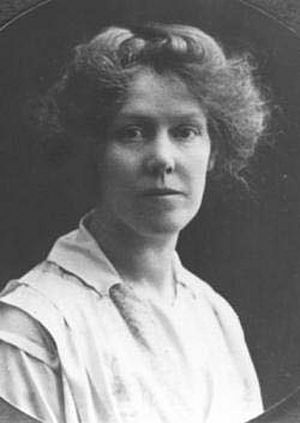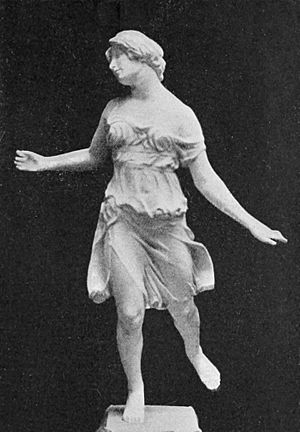Edith Maryon facts for kids
Louisa Edith Church Maryon (born February 9, 1872, in London – died May 2, 1924, in Dornach, Switzerland), known as Edith Maryon, was an English sculptor. She was a key person in the early days of anthroposophy and worked closely with its founder, Rudolf Steiner.
Contents
Edith Maryon's Life and Work
Early Life and Art Studies
Edith Maryon was the second of six children. She grew up in London with her parents, John Maryon Simeon and Louisa Church. She went to a girls' school and later to a boarding school in Geneva, Switzerland.
In the 1890s, Edith studied sculpture in London. She attended the Central School of Design and, from 1896, the Royal College of Arts. Her art was shown at the Royal Academy, a famous art institution. Many of her early sculptures were about Christian themes. Examples include a model of Michael, a relief called The Seeker of Divine Wisdom, and The Cross of Golgotha.
Working with Rudolf Steiner
Edith Maryon met Rudolf Steiner around 1912 or 1913. She moved to Dornach in Switzerland in 1914. There, she worked with Steiner on building the first Goetheanum. This was a special building designed by Steiner.
Edith also helped Steiner create a large wooden sculpture called The Representative of Humanity. Steiner designed this nine-meter-tall sculpture to be placed inside the first Goetheanum. Today, you can see it at the second Goetheanum.
The Representative of Humanity Sculpture
The sculpture shows a central figure of Christ. He stands freely and holds a balance between two other figures: Lucifer and Ahriman. These figures represent opposing forces or energies. Lucifer represents tendencies that expand and spread out, while Ahriman represents tendencies that pull inward and contract.
Steiner wanted this sculpture to be different from famous artworks like Michelangelo's Last Judgment. In Maryon's sculpture, Christ is shown as quiet and neutral. This means the other figures who come before him must judge themselves.
Leadership and Legacy
In December 1923, Rudolf Steiner chose Edith Maryon to lead the Section for the Plastic Arts at the Goetheanum. This section focused on sculptural arts. Sadly, she passed away the following May, in 1924, from tuberculosis.



